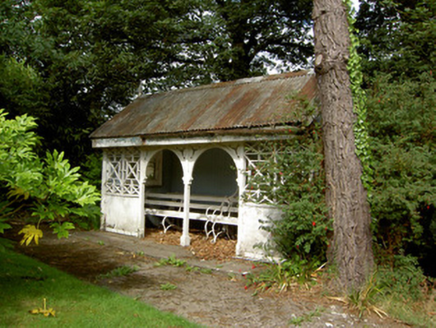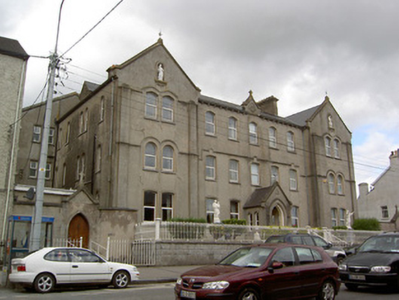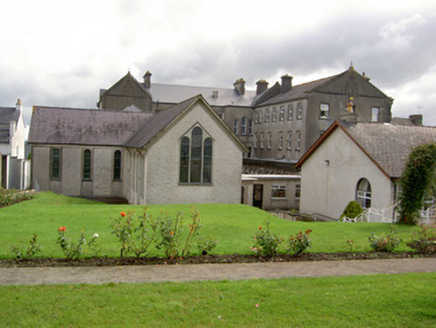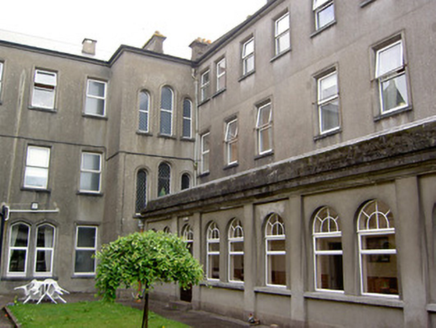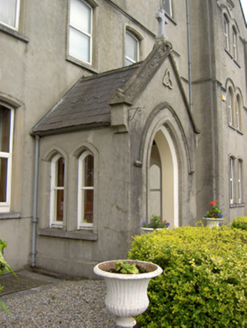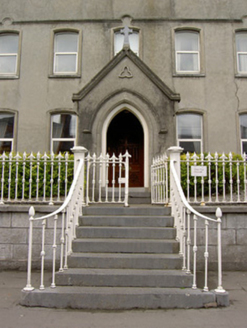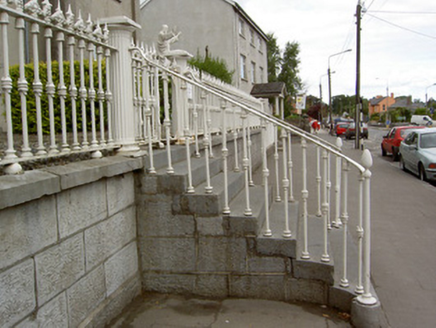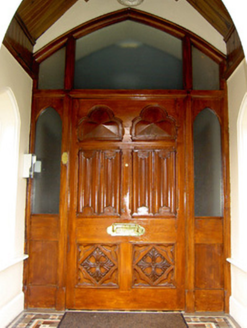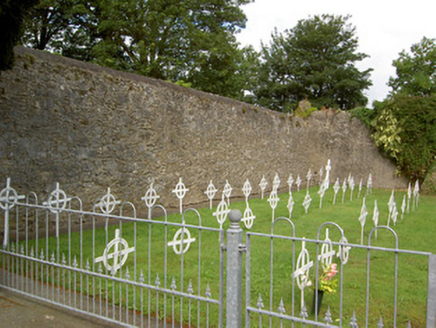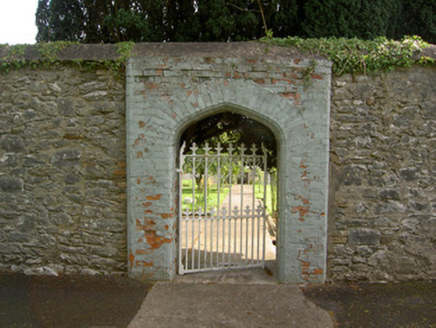Survey Data
Reg No
20806063
Rating
Regional
Categories of Special Interest
Architectural, Artistic, Historical, Scientific, Social
Original Use
Convent/nunnery
In Use As
Convent/nunnery
Date
1835 - 1900
Coordinates
153382, 122884
Date Recorded
21/08/2006
Date Updated
--/--/--
Description
Detached three-storey over basement convent, built 1838, with seven-bay front elevation having advanced gable-fronted one-bay ends, seven-bay three-storey return built c. 1880 to side elevations with flat-roof single-storey addition, and gabled entrance porch. Two-storey addition to north-west end of main block, with L-plan chapel to rear, both built c.1950. Pitched artificial slate roofs to main block and return, with rendered chimneystacks, render corbelled eaves course and copings with cross finials to gables, with rendered gablet over entrance bay of main block and over middle bays of side elevations, and having some cast-iron rainwater goods. Pitched slate roofs to two-storey addition and chapel, and carved limestone cross finial to porch gable. Smooth rendered walls, and roughcast to chapel. Render pilasters and cornice to single-storey part of return. Advanced bays have render pilasters, with niches to upper gables having religious statues. Continuous moulded render string and hood-moulding course to advanced bays and middle floor of middle bays. Replacement uPVC windows throughout, mainly with moulded surrounds and limestone sills. Advanced bays have double windows. Front elevation has Tudor arched openings to top floor, round-headed to first floor of advanced bays, with segmental-headed openings elsewhere. Round-headed windows to side elevations of main block and to single-storey part of return. Pointed arch opening to entrance porch with render hood-moulding surmounted by render trefoil motif and having square-headed ornatedly-carved timber panelled inner door with sidelights, all in Tudor-arched opening. Porch also has Tudor arched windows to side walls and decorative tiling. Round-headed lancet windows to chapel, with triple-light to west gable. Square-headed windows elsewhere in complex. Cut limestone boundary wall to front of site, with flight of limestone steps projecting into street, having ornate cast-iron railings terminating in fluted cast-iron columns, and pedestrian double-leaf gate cast by McSwiney of Cork. Pointed arch opening in rendered wall to north-west giving access to rear of complex, having cast-iron gate, with gablet having coping and cross finial above. Pointed Tudor opening with slightly advanced brick surround in random rubble limestone wall adjoining school house to south-west, having ornate cast-iron pedestrian gate. Carved timber gazebo to garden, with pitched corrugated iron roof. Graveyard to site, with cast-iron crosses.
Appraisal
The simple symmetry and lofty proportions of this imposing Tudor Gothic style convent lend the building an air of sober distinction. It is a good example of the large-scale Roman Catholic institutional buildings erected throughout the country in the nineteenth century, its early date and large scale suggesting a post- Emancipation confidence in the locality. Founded by the Sisters of Mercy, it has played an important social role in the town, most notably through its schools on its grounds. The building generally retains its original architectural detailing. The formal group of buildings on the site, the convent and Saint Mary's School, forms a focal point in the town, indicating its presence in the street by a striking ensemble of limestone steps and ornate railings.
